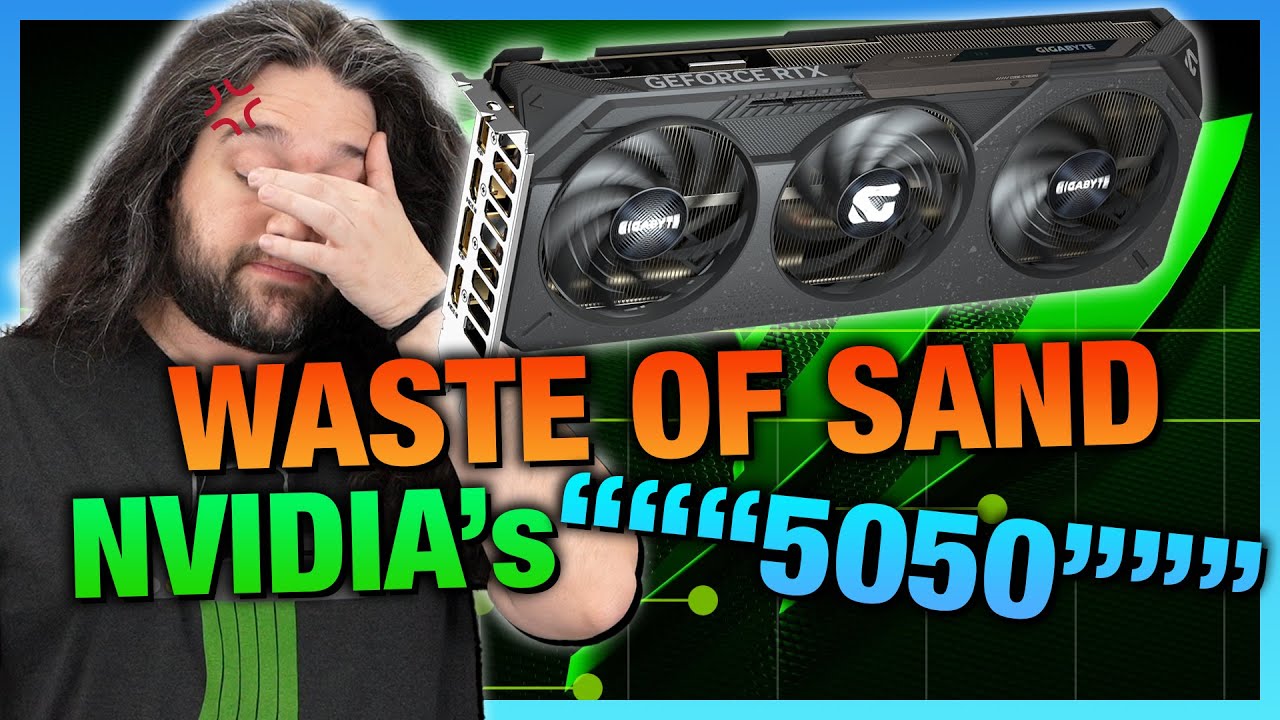The video critically exposes Nvidia’s RTX 5050 as an overpriced, underperforming product masked by misleading marketing and restrictive media control, highlighting the company’s exploitative monopoly in the GPU market. It urges consumers to seek alternatives like used GPUs and support independent reviewers to avoid falling victim to Nvidia’s deceptive practices.
The video delivers a critical analysis of Nvidia’s recent product launch, particularly focusing on the RTX 5050 graphics card, which the presenter deems a deceptive and overpriced product. Nvidia’s marketing charts are accused of being misleading, exaggerating performance improvements in a way that distorts reality, such as claiming the RTX 5060 is 90 times better than the GTX 1050, which the presenter argues is impossible. The RTX 5050 itself is criticized for its high power consumption of 130 watts requiring an 8-pin power connector, which contradicts the traditional appeal of low-end “50 class” cards that typically do not need additional power connectors. Moreover, the card’s $250 price point is considered unjustifiable when compared to better-performing used GPUs available on the market for the same or lower prices.
The presenter provides historical context by comparing the RTX 5050’s specifications and pricing to previous generations of Nvidia’s 50 and 60 series cards. The RTX 5050 is shown to have a poor price-to-performance ratio, with fewer CUDA cores and less memory bandwidth relative to its price compared to older models. This trend of declining value and increasing prices has been worsening since the 3050 series. The video also highlights how Nvidia’s relative performance charts are manipulated to make newer cards appear better than they truly are, sometimes even making older or lower-tier cards look superior in certain metrics, which adds to the confusion and misinformation for consumers.
The video also touches on Nvidia’s control over media narratives, accusing the company of restricting independent reviewers and providing early driver access only to select outlets that produce favorable coverage under strict guidelines. This is seen as a form of propaganda that misleads consumers about the true performance of Nvidia’s products. The presenter cites examples of media outlets like Games Radar and Tom’s Guide, which published positive reviews aligned with Nvidia’s messaging, despite the limitations imposed on their testing environments. This manipulation of information is viewed as harmful to the gaming and enthusiast communities, as it undermines trust and transparency.
A significant concern expressed in the video is Nvidia’s dominant market position, holding over 90% market share, which the presenter describes as a monopoly. This dominance allows Nvidia to exploit consumers by releasing subpar products at inflated prices without facing meaningful competition or consequences. The presenter laments the lack of viable alternatives, noting that even Intel’s efforts to compete have been slow and costly. This monopoly situation leaves consumers with limited choices, often pushing them toward buying used GPUs or consoles instead of new Nvidia cards that do not offer good value.
In conclusion, the video is a passionate critique of Nvidia’s current business practices, accusing the company of deceit, market abuse, and damaging the PC gaming industry. The presenter pledges to continue reviewing Nvidia products honestly and encourages consumers to consider used GPUs or alternatives rather than falling for Nvidia’s marketing tactics. The video also promotes supporting independent content creators who resist Nvidia’s propaganda and strive to provide truthful information. Ultimately, the message is a call for awareness and caution among consumers in the face of Nvidia’s aggressive and misleading strategies.
